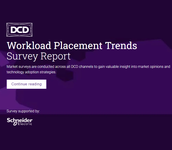At a local book fair recently, a parent stopped by my stand with her child, who was distracted on a tablet. She voiced genuine concerns about the data center industry, its environmental footprint, the rise of AI, and its societal impact. All valid points deserving an honest dialogue.
I asked casually if she’d just upgraded her devices. She smiled and said yes, a phone and laptop bundle. So I followed up: “What data plan did you get?”
“Unlimited,” she replied without hesitation.
That moment captured everything about our industry’s strategic challenge. Here was someone deeply concerned about digital infrastructure’s impact while choosing consumption patterns that drive demand for that infrastructure. Not hypocrisy, just disconnection.
Meanwhile, people use AI features daily without noticing: asking voice assistants to play music, navigating through apps, or scrolling through social media feeds curated by algorithms. Every swipe quietly pulls on the thread of infrastructure, the unseen systems that underpin modern digital life.
As a built environment professional who has worked for over a decade at the intersection of digital construction and physical infrastructure, I’ve seen how this disconnect creates real-world risks: planning objections, talent shortages, and community resistance to facilities that sustain our digital habits.
The business case for infrastructure literacy
The gap between digital usage and infrastructure understanding shows up in measurable ways. Community meetings where residents oppose developments they depend on. STEM graduates who picture “tech careers” as app development, but never infrastructure operations. Section 106 obligations are treated as compliance burdens rather than strategic investments.
With the UK’s renewed focus on AI infrastructure, these challenges intensify. Public discourse frames AI as abstract or threatening, rarely acknowledging the computing requirements. Yet people use AI features every day, without connecting them to the physical systems that make them possible.
The result: planning friction, shallow talent pools, and facilities positioned as impositions rather than enablers. Operators who proactively address these challenges through education report measurable outcomes: reduced planning objections, expanded recruitment pipelines, and improved community relationships that accelerate development.
This isn’t soft skills, it’s operational risk management. The talent shortage in infrastructure operations stems from decades of industry invisibility. Young people can’t aspire to careers they don’t know exist. Strategic education programs address recruitment challenges years before traditional hiring campaigns begin, building awareness that compounds as students make educational and career choices.
Strategic education across organizational levels
Effective infrastructure education scales across audiences, each requiring approaches aligned to business objectives.
Community engagement needs accessible entry points, tangible concepts for children, and practical connections for adults between daily digital habits and infrastructure requirements. These programs build long-term social license while addressing immediate planning challenges.
Corporate stakeholder education requires frameworks linking community understanding to operational efficiency, demonstrating how systematic programs reduce planning timelines and improve local hiring outcomes. Section 106 obligations become strategic investments when approached as education funding. Money spent building infrastructure literacy creates foundations for sustainable expansion with measurable returns.
Technical teams benefit from communication frameworks that translate specialized knowledge for non-technical audiences. Infrastructure professionals possess deep expertise but often lack tools for explaining complex systems accessibly. This capability gap affects community engagement effectiveness and limits leadership development internally.
From reactive to strategic
Traditional engagement happens too late, usually at the planning stage, when opposition is already entrenched. By then, it’s damage control.
Better outcomes come when operators start conversations earlier: school visits explaining where digital files actually “live,” library workshops connecting phone usage to local infrastructure, or community presentations that acknowledge environmental concerns while showing real efficiency progress.
These aren’t promotional exercises. They’re systematic programs designed to build shared understanding before conflict emerges. When people grasp their own role in infrastructure demand, conversations shift from “why do we need this?” to “how can we make this work sustainably?”
Environmental concerns deserve honest answers. Yes, facilities use water and energy. Here’s why those resources are necessary, how efficiency is improving, and how consumption patterns affect usage. People make better decisions when they understand trade-offs rather than feeling excluded from technical discussions.
Building sustainable growth
The data center industry is entering a period of unprecedented expansion, driven by AI demand. But growth happens with communities, not apart from them.
Organizations succeeding in this space recognize that education requires both domain expertise and pedagogical design. Understanding technical systems isn’t enough. Neither is communication skill alone. The combination, translating complex operations into accessible frameworks without oversimplifying, creates programs that genuinely shift understanding.
We are not just building facilities. We are building the systems that enable digital society, and the communities hosting this infrastructure are essential partners in that process. Making those connections visible isn’t just good community relations; it’s a strategic necessity for sustainable industry growth.
Because every “unlimited” plan, every swipe on social media, every AI-powered answer is tethered to physical infrastructure. Our challenge, and our opportunity, is ensuring people see the thread connecting their choices to the systems sustaining them.
Only then can this industry grow at the pace society demands, and with the understanding society deserves.
More in Workforce & Skills
Read the orginal article: https://www.datacenterdynamics.com/en/opinions/infrastructure-education-building-strategic-community-understanding-in-the-data-center-industry/





